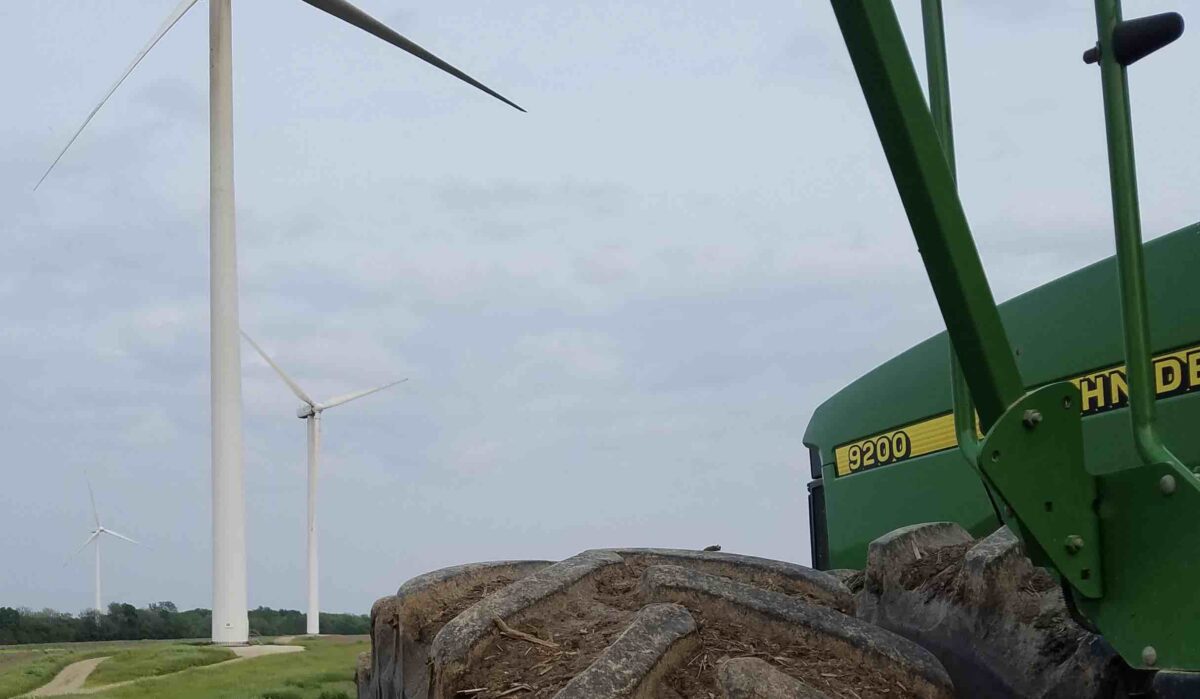In the heart of regional communities, opposition is growing against the proliferation of transmission, solar and wind projects.
The stakes are high, and as the debate intensifies, the golden opportunities for Australian farmers seem to be slipping through their fingers. Grazier Charlie Prell describes this moment as a “sliding doors” scenario – grasp the opportunities now or miss a goldmine.
For farmers willing to embrace change, the rewards are substantial. Hosting solar and wind developments can provide a revenue stream that can reach hundreds of thousands of dollars annually throughout the project’s lifespan, independent of weather patterns.
As someone living on a wheat, barley and cotton farm in Central West New South Wales that hasn’t grown or harvested a successful crops in two years due to flooding (and before this we went through one of the sharpest droughts on record), it’s easy to see how alluring a reliable income is.
This income would not only relieve stress but would continue to flow into local economies during droughts and floods.
However, the narrative shifts when we consider the experiences of transmission hosts and neighbours living in the shadows of these energy developments.
Many farmers are already under huge amounts of stress due to variability in climate and production, labour shortages, succession planning and increasing input costs.
For transmission hosts and neighbours, their compensation is not as lucrative, nor does it contribute significantly to building resilience. In some cases, neighbours may not receive any compensation at all.
Their experience involves navigating a complex web of meetings, contractual negotiations, road access agreements, dust, heightened construction-related activity, altered landscapes, and biosecurity challenges.
These impacts are substantial, yet the recognition and compensation for this group often fall short. While the entire nation reaps the benefits of affordable green power, it’s a minority who bears the costs.
Agrivoltaics
Land use conflict and the use of prime agricultural land for large-scale solar developments is often raised as a concern due to food security and the loss of agricultural jobs impacting local economies.
I have recently undertaken work, along with Andrew Bomm from Progressive Ag, farmer Tome Warren and in partnership with EnergyCo NSW to understand the barriers and opportunities in agrivoltaics.
Agrivoltaics (also referred to as ‘agrisolar’) refers to co-locating agricultural production systems with solar development.
Co-locating our food and energy systems presents a promising pathway for farmers, solar developers and governments, provided it is executed with careful consideration and integrated thinking.
Adoption has been slow in Australia, hindered by knowledge gaps, technical and economic impediments, poor planning and a lack of clear policy guidance at development stage.
This project underscored the necessity for research and demonstration sites, supportive policy and knowledge sharing to pave the way for adoption of agrivoltaics on a significant scale.
Some insights include:
- Solar grazing systems require adequate planning and design prior to construction to avoid major problems and costs later.
- The current insurance requirements for site management for solarb grazing (especially grass height) are both restrictive and subject to unexpected policy change. These factors are a major impediment to encouraging agricultural production and an ecologically friendly sheep management system.
- The distribution network could play an important role in locating agrivoltaic systems in horticultural regions with the benefit that solar panels can increase soil moisture, reduce irrigation demands, protect crops from excessive heat, and safeguard plants against frost and hail damage.
- Biodiversity should be prioritised in low rainfall zones.
- There is a need for user-friendly best practice guidelines to provide necessary decision making frameworks for farmers, developers and planners.
- Australian based research and demonstration sites are needed to study micro-climates under panels for plants, what crops are best suited to agrivoltaics e.g. berries, pumpkins, fruit trees, vineyards or leafy greens.
- Government policy will be a key driver of success.
There is much still to understand in this emerging practice and an analysis of Australia’s PV market and developments (solar panels, substructures, integration of water management) will enable a better understanding of designs that assist water conservation and capture and effectiveness of novel configurations of solar cells and panels (bifacial, semi-transparent, chequerboard pattern etc).
Benefit sharing guidelines
The NSW government recently released new wind, solar and transmission benefit sharing guidelines and is seeking feedback.
The Benefit Sharing guidelines are a step in the right direction but shouldn’t replace developers earning the trust of communities and engaging in meaningful conversations about the needs of the region first.
The funds that flow from these developments can be a lifeline to under-resourced rural towns, especially if they are distributed to those most impacted, including neighbours and transmission hosts.
The guidelines suggest funds should be administered and distributed through Councils. There needs to be recognition of the diversity in community trust levels and representation within Councils, especially in geographically larger Local Government Areas (LGAs). When Councils administer benefits and funds, it is important to establish committees inclusive of community representatives.
In addition, redirecting funds towards staff resources for community-driven initiatives is helpful to alleviate the burden on volunteers. This strategic allocation not only facilitates efficient fund administration but also minimises burnout and enhances the effectiveness of funded projects.
As the nation charts its course towards a cleaner energy future, it is critical that farmers receive not only due acknowledgment of their contributions but also targeted support.
This support should address concerns related to insurance, decommissioning and community engagement, fostering a transition that is fair, transparent and inclusive.
The next National Renewables in Agriculture Conference will be 4 July in Toowoomba, Queensland, and will explore some of the issues discussed in this article.
Karin Stark is director of Farm Renewables Consulting, founder of the National Renewables in Agriculture Conference and lives on a farm in the Central West NSW









